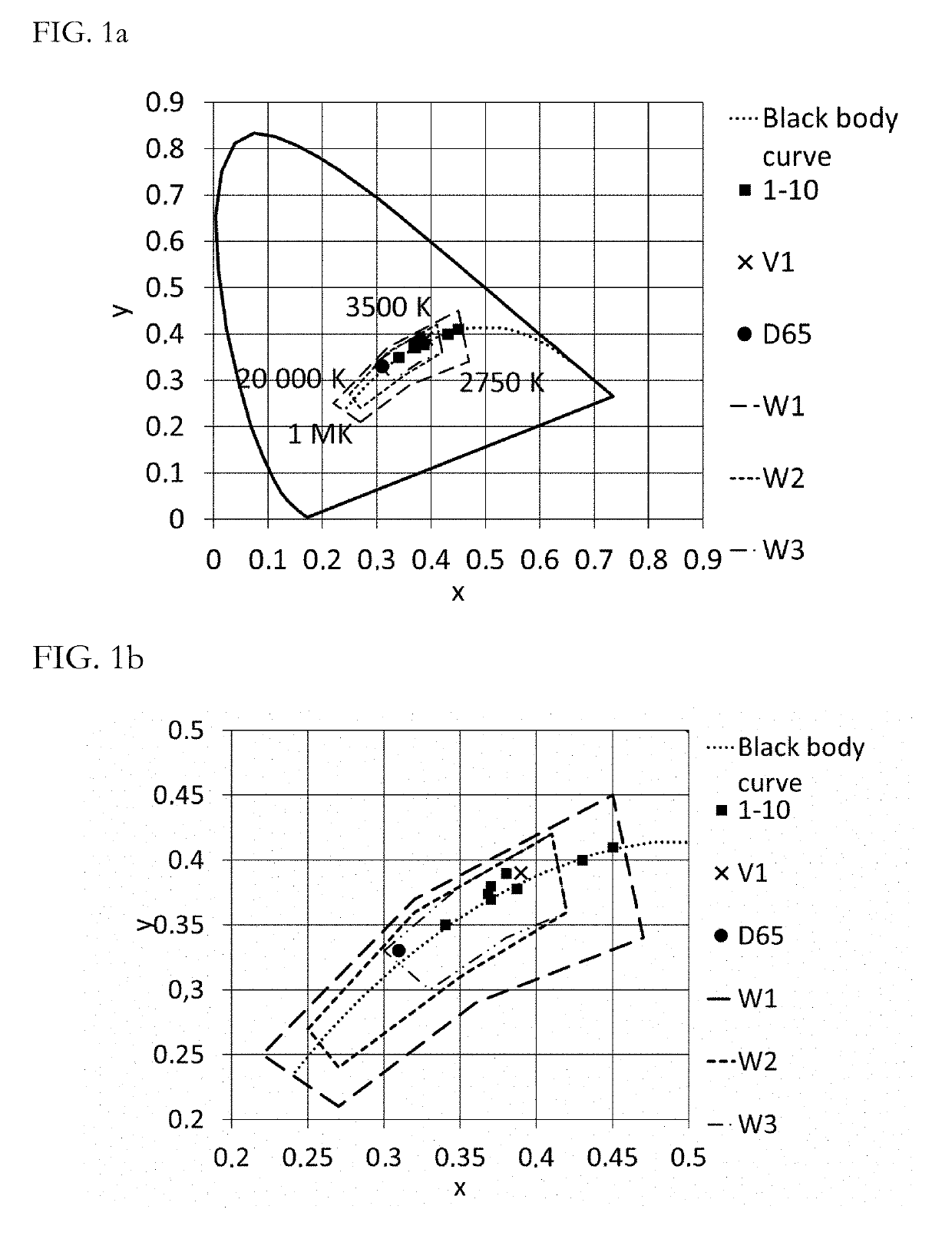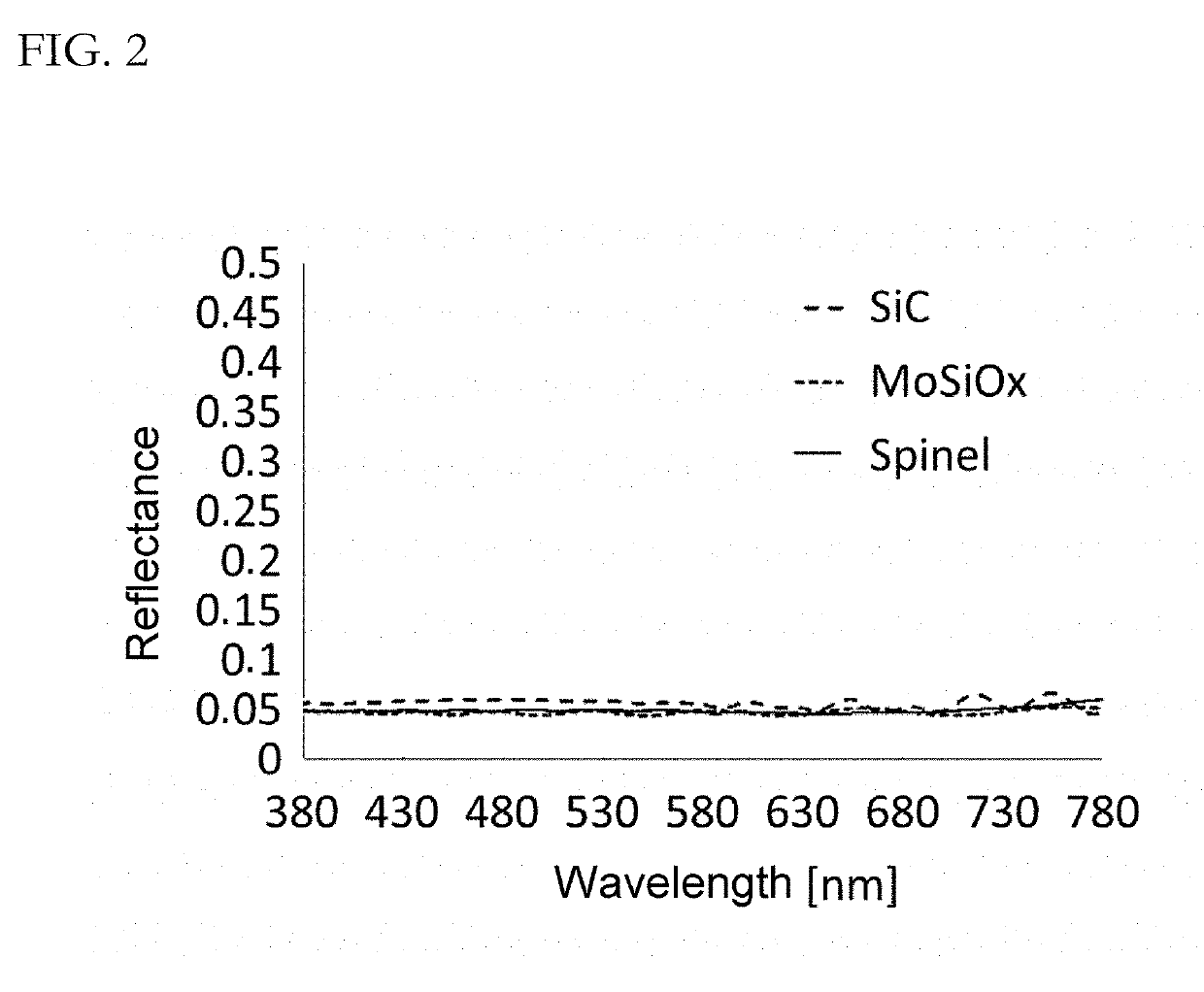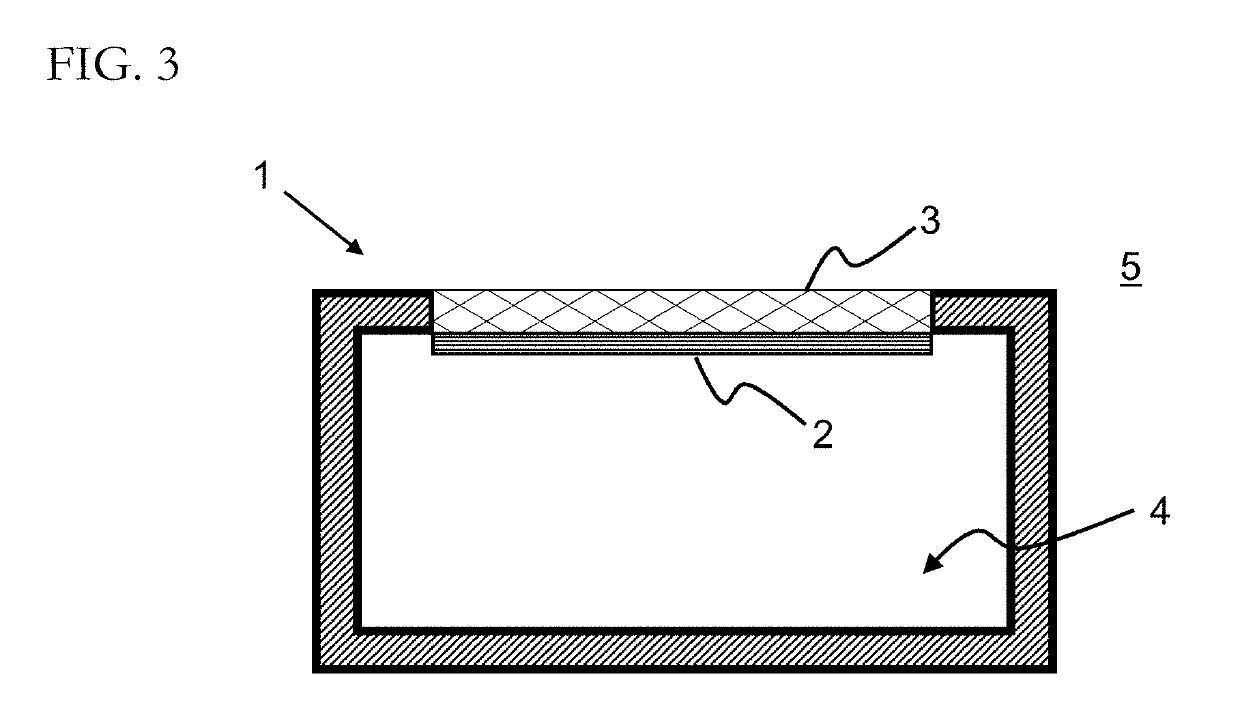Cover panel with colour-neutral coating
a technology of colour-neutral coating and cover panel, which is applied in glass tempering apparatus, glass making apparatus, manufacturing tools, etc., can solve the problems of loss of image quality, metallic appearance, and inability to produce precise openings subsequently only with great complexity, and achieve flat transmission profile, high electrical resistance, and flat profile of spectral reflectance
- Summary
- Abstract
- Description
- Claims
- Application Information
AI Technical Summary
Benefits of technology
Problems solved by technology
Method used
Image
Examples
Embodiment Construction
[0109]FIG. 1a shows a chromaticity diagram of the CIExyY colour space with 2° standard observer (CIExyY-2°).
[0110]FIG. 1a shows the following elements: the black-body curve as a dotted line, the two white regions W1 and W2 as dashed lines, the white region W3 as a dashed line with dots, the colour coordinates of D65 standard illuminant light as a dot, the colour coordinates of D65 standard illuminant light after passing through working examples 1-10 as squares, and the colour coordinates of D65 standard illuminant light after passing through comparative example V1 as x.
[0111]FIG. 1b shows an enlarged detail from FIG. 1a.
[0112]Every point on the black-body curve corresponds to the colour locus of the light emitted by a black-body radiator at a defined temperature, called the colour temperature. This curve is of particular relevance to human perception since the sun likewise corresponds to a black-body radiator and hence the colour of sunlight is on the black-body curve. According to...
PUM
| Property | Measurement | Unit |
|---|---|---|
| light transmittance | aaaaa | aaaaa |
| glass transition temperature Tg | aaaaa | aaaaa |
| glass transition temperature Tg | aaaaa | aaaaa |
Abstract
Description
Claims
Application Information
 Login to View More
Login to View More - R&D
- Intellectual Property
- Life Sciences
- Materials
- Tech Scout
- Unparalleled Data Quality
- Higher Quality Content
- 60% Fewer Hallucinations
Browse by: Latest US Patents, China's latest patents, Technical Efficacy Thesaurus, Application Domain, Technology Topic, Popular Technical Reports.
© 2025 PatSnap. All rights reserved.Legal|Privacy policy|Modern Slavery Act Transparency Statement|Sitemap|About US| Contact US: help@patsnap.com



